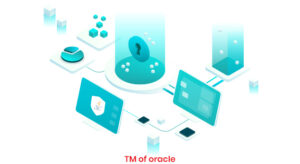In today’s software-driven world, Java remains one of the most popular and versatile programming languages used for developing enterprise applications, web solutions, and mobile apps. However, with evolving Java Licensing rules and the introduction of paid models by Oracle, many businesses are now exploring Java Free alternatives to manage costs while staying compliant. Understanding how Java licensing works and how to take advantage of free distributions can save organizations from unnecessary expenses and potential legal complications.

The Evolution of Java Licensing
For many years, Java was known as an open-source platform, freely available for developers and enterprises alike. But in 2019, Oracle introduced a major change to its Java Licensing policy. The company began requiring commercial users to purchase a subscription for Oracle JDK (Java Development Kit) if they wanted updates and support for production environments.
This change led to confusion and concern among organizations that had relied on Java for decades. Many businesses suddenly found themselves facing unexpected costs for something they had always considered free. The shift made it essential to understand what “Java Free” really means and how businesses can continue using Java legally without paying high license fees.
What Does “Java Free” Really Mean?
When we talk about Java Free, it doesn’t mean all versions or distributions of Java are completely cost-free in every scenario. Rather, it means that developers and companies can use open-source versions of Java that are freely distributed under the GNU General Public License (GPL) or other similar licenses.
There are multiple Java Free distributions that comply with open standards and provide long-term support, performance, and security updates—just like Oracle JDK. These distributions are managed by trusted organizations and communities that ensure ongoing compatibility with the Java platform.
Some of the most popular Java Free options include:
OpenJDK (Open Java Development Kit) – The official open-source version of Java, supported by many vendors.
Amazon Corretto – A free, production-ready distribution of OpenJDK maintained by Amazon.
Adoptium (formerly AdoptOpenJDK) – A community-driven project offering prebuilt binaries for Java.
Zulu OpenJDK by Azul Systems – A free distribution with commercial support available if needed.
Red Hat OpenJDK – Supported by Red Hat, ideal for enterprise Linux environments.
These Java Free alternatives provide the same core functionality as Oracle JDK, but without the restrictive Java Licensing costs.
How Java Licensing Affects Businesses
Understanding Java Licensing is critical for organizations that rely on Java for software development or runtime operations. Oracle’s licensing terms distinguish between personal use and commercial use:
Personal use (like learning, testing, or home projects) is often still free.
Commercial use (for business applications or production servers) usually requires a paid subscription if using Oracle JDK.
If a business uses Oracle JDK in production without a license, it could face non-compliance penalties or legal risks. That’s why switching to a Java Free distribution is often the safest and most cost-effective choice.
To stay compliant, companies should audit their Java usage across all systems, identify Oracle JDK installations, and migrate to free or open-source alternatives wherever possible.
Benefits of Using Java Free Distributions
Adopting a Java Free solution brings multiple advantages beyond saving licensing costs:
Cost Savings – Businesses eliminate Oracle subscription fees, which can be significant in large-scale environments.
Compliance Assurance – Using open-source Java versions ensures there are no hidden licensing liabilities.
Flexibility – Organizations can choose from several distributions based on their infrastructure and support requirements.
Community Support – Most Java Free platforms have active developer communities, ensuring continuous updates and improvements.
Compatibility – OpenJDK and its derivatives maintain compatibility with the Java SE standard, meaning existing applications work seamlessly.
Transitioning from Oracle JDK to Java Free
Migrating from Oracle JDK to a Java Free alternative is simpler than most businesses expect. The process involves:
Assessing Current Usage – Identify all environments where Java is installed (servers, workstations, development systems).
Choosing a Replacement – Select a Java Free distribution such as Amazon Corretto, Adoptium, or Zulu.
Testing Applications – Verify compatibility and performance with the chosen Java version.
Implementing Updates – Roll out the new distribution across systems while ensuring smooth integration.
Monitoring and Maintenance – Regularly check for updates and patches from the new vendor.
Many organizations complete this migration without disruption, thanks to the high compatibility between Oracle JDK and OpenJDK-based versions.
Best Practices for Managing Java Licensing
Even if your organization uses Java Free distributions, it’s important to maintain a clear licensing strategy. Follow these best practices to stay compliant and efficient:
Keep an inventory of all Java installations and versions.
Avoid mixing Oracle JDK with open-source distributions to prevent confusion.
Monitor vendor updates for new licensing or support policies.
Document your Java usage for audits and compliance checks.
By taking a proactive approach, companies can minimize risks and ensure they’re always operating within legal boundaries.

The Future of Java Licensing
The Java ecosystem continues to evolve, with many vendors offering both free and paid options tailored to different needs. Oracle’s Java Licensing model may remain suitable for enterprises that require guaranteed support and enterprise-level SLAs. However, for most developers and organizations, Java Free distributions provide all the power, flexibility, and stability needed—without the financial burden.
As the open-source community continues to strengthen Java’s foundation, businesses have more freedom than ever to choose how they implement Java. Whether you’re building cloud applications, enterprise systems, or IoT solutions, a Java Free environment ensures innovation without licensing worries.
Conclusion
In summary, understanding Java Licensing and leveraging Java Free distributions is essential for modern organizations. With so many reliable open-source alternatives available, companies can confidently move away from costly Oracle subscriptions while maintaining security, compatibility, and performance











Comments